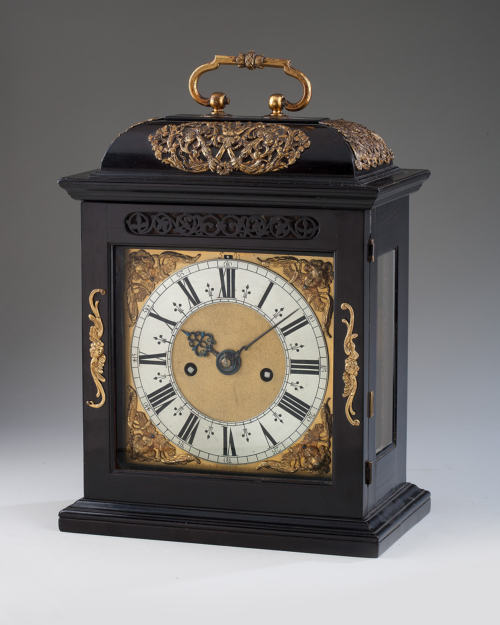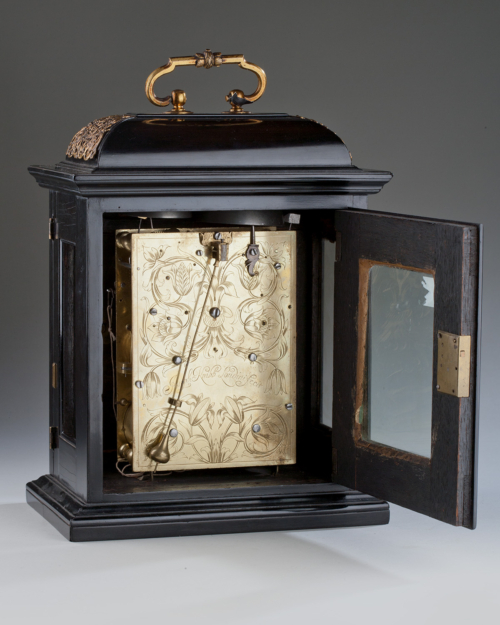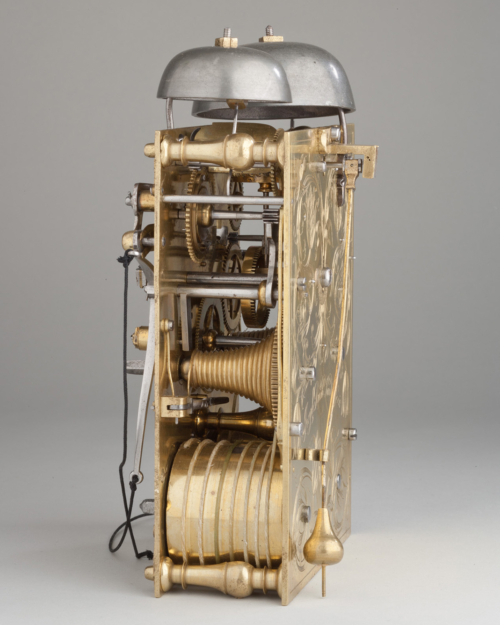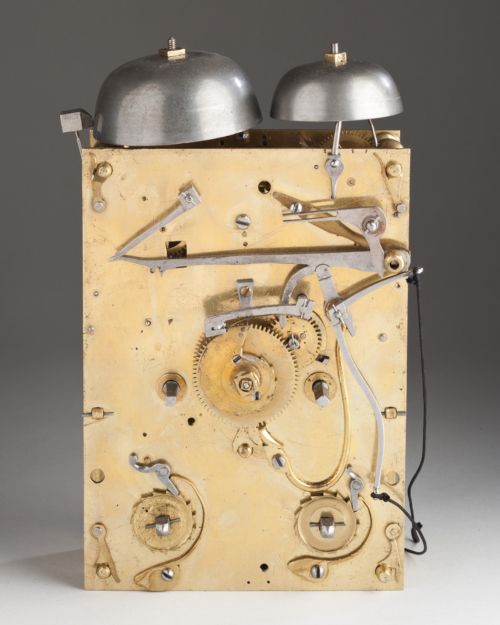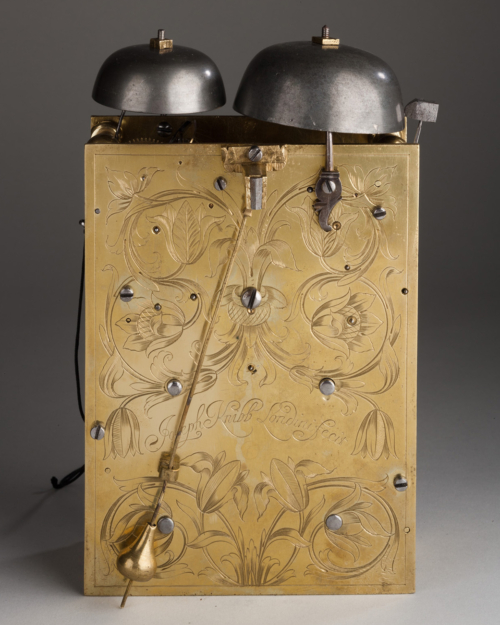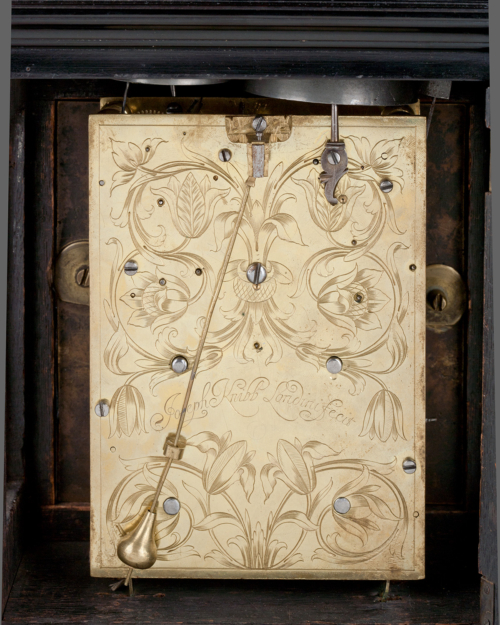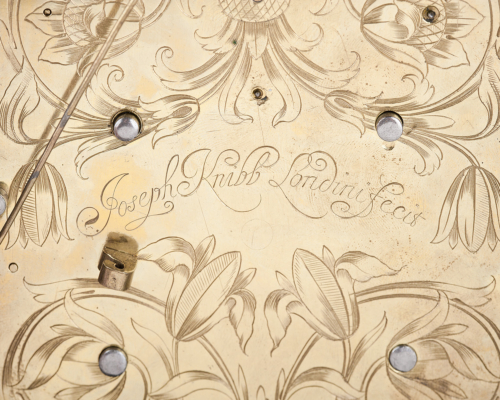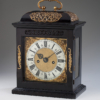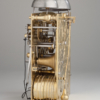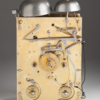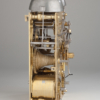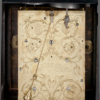| Height | 12¼ inches |
| Case | Typical Knibb Phase III case, ebony veneered on oak, the dome top with foliate mounts and surmounted by a gilt-brass foliate-tied handle, the flat-top main moulding set above a square door with inset wood fret on the top rail with S-scroll and mask escutcheons, glazed rectangular side apertures, the base moulding typically sitting on an oak board with ebony veneered edges. |
| Dial | The 6 inch square gilt-brass dial with latched feet, winged-cherub spandrels with matted centre, chapter-ring engraved with Roman hours with trident half-hour marks and Arabic numerals within the minute ring. Strike/Not strike lever at XII. |
| Movement | Fine twin-fusee movement, 4¾ by 6¾ inch plates, five latched vase-shaped pillars, going train with knife-edge verge escapement and short bob pendulum. Strike train governed by rack-and-snail striking the hours on the larger bell, the quarters repeated on the smaller bell. The all-over tulip engraved backplate within a line border signed in an arc Joseph Knibb Londini fecit. |
| Duration | 8-day. |
| Provenance | Christie’s, London, 12 April 1988, lot 46 (£35,200). |
| Literature | Garnier & Carter, The Golden Age of English Horology, 2015, p.368-369. |
| Escapement | Knife-edge verge. |
Joseph Knibb, London circa 1685
A Phase III ebony striking spring table clock with pull-quarter repeat
Additional information
| Dimensions | 5827373 cm |
|---|

